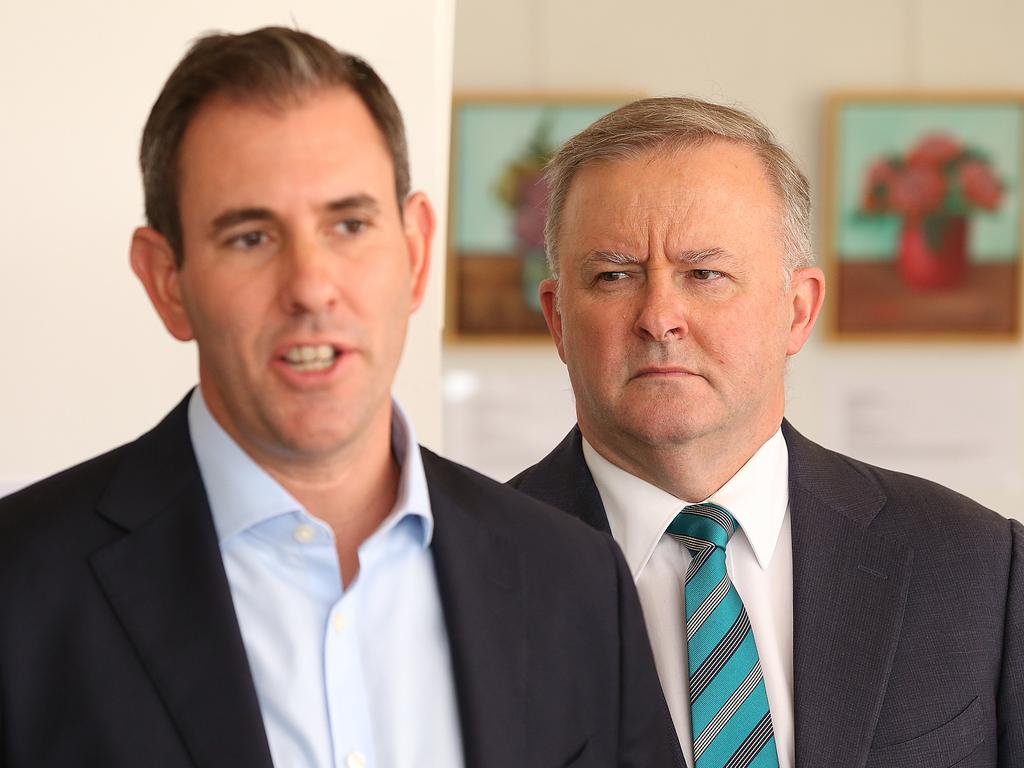
Time will tell if it just heard the opportunism of Twitter’s politicised reaction to the fires, and has simply repeated Bill Shorten’s mistake at the 2019 election. Labor then, as now, refused to detail the cost of its emissions reduction policy and claimed the real question should be the cost of inaction. Sceptics might also suggest Labor has simply delayed the focus of its plans from 2030 to 2050.
My community on the NSW Mid-North Coast was evacuated twice early in November. The record shows fires had been burning around Port Macquarie since August. Those fires and others from Foster north to the border claimed lives, homes and millions of hectares of bushland. But the media coverage only reached panic stations when fire approached Sydney and then hit the NSW South Coast beach hamlets so beloved of many journalists, especially those who work in Canberra.
The left media was desperate to link the fires to climate change and specifically to the failure of the Coalition to adopt more aggressive climate targets, as if the fires would not have happened had Labor been elected. Indeed, rational journalists who pointed out most carbon dioxide emissions were coming from northern hemisphere giants such as China, whose annual emissions increase exceeds Australia’s annual total, were derided as climate deniers.
My colleague Chris Kenny, never a climate denier, was criticised for two informative pieces that made clear this summer’s fires were not the worst in Australia’s history but specifically conceded climate change would make fire conditions worse. This column on December 2 pointed to the royal commission report into the 2009 Black Saturday fires in Victoria in which 173 people died and 2133 homes were destroyed. It recommended “bushfire risk be accounted for in the application of controls on clearing native vegetation … and houses be restricted on high-risk blocks too small to allow a defensible space to be created …”
One body Labor and the ABC will never criticise has done the work on the cost of inaction. The Intergovernmental Panel on Climate Change estimates the cost of climate change is likely to be less than 2 per cent of global GDP by the end of the century. The cost of decarbonising with renewable energy is likely to be 4 per cent of global GDP. As scientist and UK media commentator Matt Ridley says of those numbers: “Why do something that you know will do more harm than good?”

Ridley has belled the cat on outlandish projections that have helped create the idea of an imminent climate emergency popularised by The Guardian and Swedish campaigner Greta Thunberg. The IPCC produced four scenarios of possible warming, three of which had warming of less than 2C.
The outlier, the one picked up by alarmist media, was RCP8.5. It came up with warming of 3.5C in 2081-2100. To get there what was supposed to be “a baseline business as usual scenario” actually assumed continued global population growth to 12 billion by the end of the century. It also assumed the world would burn coal at 10 times today’s rate; that half world energy would come from coal (30 per cent today) because oil would be scarcer and most liquid fossil fuel would be derived from coal; and there would be almost no increase in energy derived from nuclear or renewable power. The model also neglected the rise of gas. This is how so-called science can be manipulated.
While ABC Media Watch chose to start its year on February 3 with a program that bagged News Corp’s climate coverage and specifically took issue with Kenny’s bushfire pieces on November 15 and January 18, host Paul Barry seems to have been unaware of an excellent bushfires explainer published on BBC.com on January 31.
The BBC does not try to downplay the severity or extent of the fires. But, like Kenny, it highlights several inconvenient truths: Fires in Victoria in 1926 and 1939 (60 and 71 dead, respectively), in Tasmania in 1967 (62 dead), in Victoria and South Australia in 1983 (75 dead) and in Victoria in 2009 (173 dead) were far more dangerous than last summer’s fires (31 dead). The BBC says Australia is 1C hotter than in 1910 but the link between climate change and fire is complicated and the main climate driver in the latest fires was the heat and drought effect in eastern Australia of a 60-year-high Indian Ocean Dipole (where ocean surface water temperatures are warmer in the west near Africa and cooler in the east). This newspaper, correctly, made the same argument.
It was left to Copenhagen Consensus director Bjorn Lomborg the Saturday before that Media Watch episode to bring some sense to the Australian fire season.
“Australia is the world’s most fire-prone continent,” he wrote on February 1. “In 1900, 11 per cent of its surface burned annually. These days, 5 per cent …”
A sceptic on the economic assumptions of climate scientists but a believer in warming, Lomborg said if climate change could not be stopped “an increase in aridity will likely mean a 0.7-percentage-point increase in burnt area from 5.3 … to 6 per cent”. “Since 1900, global burnt area has reduced by more than one-third because of agriculture, fire suppression and forest management. Satellites show that from 1997 to 2018 the burnt area (in Australia) fell by one-third. This fire season 2.5 per cent of Australia’s area has burned compared with the past 10 years’ average of 4.8 per cent by this point.
“What is different this year is that the fires have been mostly in NSW and Victoria … States with a little more than half the country’s population – and many of its media outlets.”

The political problem with global warming is that left and right speak different emotional languages on the issue. Voters on the left and young voters seem to think action by individuals and our government can save the planet. No amount of spending is too much in their minds. Older voters and those on the right see little point in destroying Australian living standards when CO2 emissions are continuing to increase rapidly in China, Asia and India. The Guardian, wrongly in my view, argues focusing on our low total of emissions is dishonest.
Like left-wing journalists who have never learned the lessons of strong border protection and asylum-seekers arriving by boat, the left media and the ALP are likely to regret repeating Labor’s last mistake with its new 2050 target.
Many will also come to rue the economic damage done to our country by the way the fires were used for political purposes. Across South America in January and early February my wife and I met locals and tourists from North America and Europe who believed this continent was consumed with fire. They offered commiserations but decided they could not visit Australia in such circumstances.
The media circus has now moved on to a new panic: coronavirus. Like the fires, and like earlier reporting of SARS and bird flu, events will again prove our media lacks the judgment that once marked it as different from the UK red tops.








When Opposition Leader Anthony Albanese signed up on February 21 to net zero carbon emissions by 2050 Labor suggested it had heard the message Australians took from a summer of bushfires.